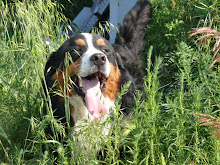What You Can Do
Support legislation that abolishes battery cages, veal crates, and intensive-confinement systems?.
NO!
What you can and should do is stop and think for yourself.
Instead of blindly following peta's propaganda trail, stop and think why animals are farmed the way they are.
Peta and other AR organisations like to glorify small family farms the like of which have largely disappeared except as hobby farms kept by people who have an alternative income.
Were drafty sheds with no electricity or water really better than custom built, temperature controlled buildings?
Were a stressed, overworked, dawn to dusk, jack of all trades farmer and his wife and children really better caretakers than a trained, possibly university educated, 8 hour day stockman?
Was it really better to supplement pig and chicken feed with kitchen scraps and dead animals (did you know that if one of the pigs or chickens died it would be left for the others to dine on along with the crows and the coyotes) or to feed a scientifically formulated ration?
Was it really better to have pigs living on solid floors? Farmers hadn't the time, the money or the energy to clean them out every day, so they invented something better. The slatted floor. Slatted floors may not be perfect but they're better than living ankle deep in slurry, which is how most pigs lived. Straw is fine when it is fresh and clean but it can only absorb so much urine and feces.
Was it better for sows to be loose when they were raising their young? Not only did mortality run at about 40% due to piglets being crushed to death by their large cumbersome mothers, but many of the "luckier" piglets were left with broken or deformed limbs, cuts and abrasions that became infected or brain damage, all of which affected their ability to suckle, so they failed to thrive. Many piglets died of hypothermia before they even made it to the udder for their first suckle.
Farmers wanted something better for their piglets so they invented the farrowing crate which not only dramatically dropped mortality (to about 10%)due to the piglet being warmer and safer, it also made life safer for the stockman who was no longer attacked by an irate sow.
Is it really better for chickens to run loose round the farmyard, where they could be picked off at any moment by a fox or coyote, chased by the family dog, have their chicks eaten by rats and barncats, have to put up with all types of weather, be raped several times a day by the rooster, be subject to nasty parasites, infections and injury all of which affected a birds ability to forage for food, or to be indoors, safe from predators, where adequate food and water is delivered at regular intervals?
As a stockman I know which I prefer. I like to be warm, dry, healthy and safe and because I care about my animals I like to see them comfortable and well fed.
Livestock farming isn't perfect, for the stockman or the stock. Likely it never will be, but to blame the system is wrong. It doesn't matter what type of system an animal lives in, intensive, semi-intensive or non intensive, what matters is having a dedicated, skillful, compassionate stockman who knows his animals and their needs and works to constantly meet or exceed those needs.
Livestock farmers are still the hardest working and least appreciated sector of society. We produce FOOD folks. Contrary to peta propaganda we actually do it because we like animals. You have to like animals a lot to put in the hours and the energy, we certainly don't do it for the money, often as not there's more money going out than there is coming in, which means you are having dinner on us.
Quote of the day
By Chelsea, peta supporter
"You eat rabbit food?"
"You eat vulture food?"
"Where do you get your protein"
"Where does a cow get its protein?"
"Is that all you are going to eat?"
"Are you going to eat all that?"
"Are you going to eat all that (tons of lettuce, fruit)?"
"You are just going to eat that (sandwich, hot dog, etc)"
"Where do you get your (nutrients)?"
"Everything I eat - where do you get yours?"
"What you are eating is nasty"
"And the inside of a cow isn't?"




